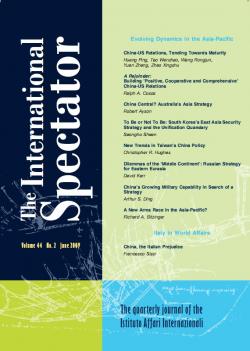The International Spectator, Vol. 46, No. 2, June 2011

22/06/2011
Sezione speciale su India in its Neighbourhood and Beyond
Winds of Change: India's Emerging Climate Change Strategy Free
Recent Publications Free
-
Numero
46/2



